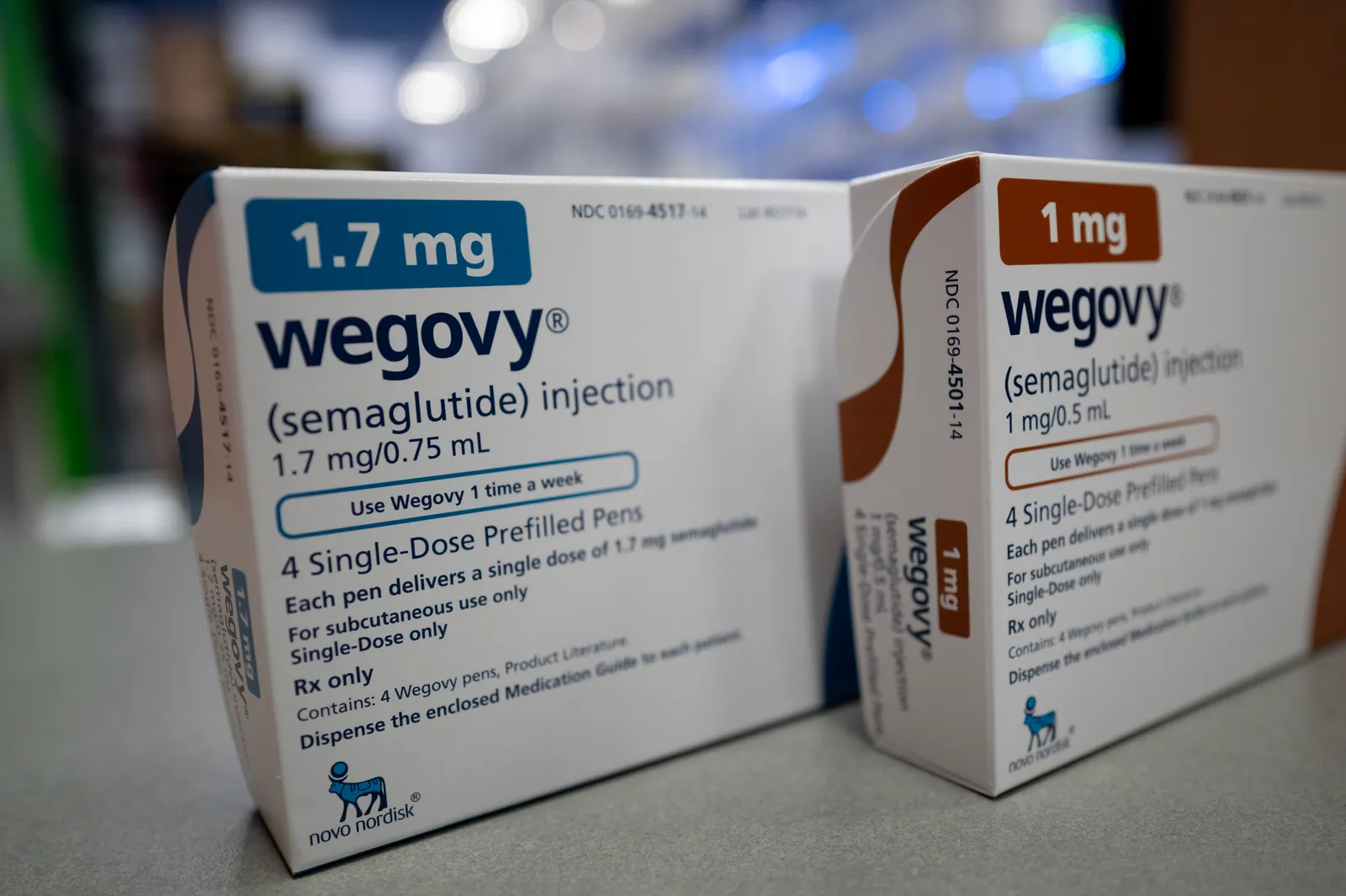Listen to the article
Health insurers had a tumultuous 2024. The industry was buffeted by sweeping policy changes that pressured reimbursement, while higher medical utilization drove costs up. And by year’s end, payers found themselves engulfed in a firestorm of public anger over controversial business practices.
The challenges slammed insurers’ value on Wall Street. Stocks in managed care companies significantly underperformed the rest of the market last year, falling about 13% compared to 23% growth for the S&P 500.
But things are looking up for payers in 2025, according to experts. The policy backdrop should improve with the advent of President-elect Donald Trump’s administration, which is expected to be much friendlier to business than the Biden administration.
In particular, the regime change should benefit insurers peddling once-lucrative privatized Medicare plans — though, payers might still slash benefits in Medicare Advantage plans this year as they hustle to recoup profits, experts say.
However, actions from the incoming administration to cut funding for Medicaid and the Affordable Care Act exchanges could be negative for payers. There’s also significant uncertainty as to the Trump administration’s priorities in healthcare, stemming mostly from the president-elect’s unconventional picks for top health policy roles.
“I think we all thought okay, once the election’s over, there’s no more overhang. It’s all guns ablazing one way or another. But there’s still going to be a little bit of the same wait and see,” Daniel Gorlin, the global lead of Boston Consulting Group’s payer and provider business, said.
Ripple effects from the shocking killing of an insurance executive last year have also laid bare for payers the need to improve consumer trust, and experts believe they’ll invest significant resources into that effort in 2025. In addition, access to in-demand weight loss drugs should increase this year as the Trump administration faces a weighty decision on Medicare coverage.
Here are the biggest predictions for health insurers in 2025.
Brian Thompson’s death will amplify concerns about trust — and accelerate insurer efforts to improve it
The brazen shooting of UnitedHealthcare CEO Brian Thompson in December set off a national conversation about health insurers’ tactics to cut spending that occasionally prevent necessary medical care.
Thompson’s death, and the furor it sparked, will spur insurers to increase consumer trust this year — while keeping state and federal lawmakers focused on reforming the industry, according to experts.
The shooting “shines a brighter light, unfortunately, on some of the shortcomings, candidly, of health insurers,” said Arielle Trzcinski, a principal analyst in Forrester’s healthcare division.
Trust in insurers has steadily declined in recent years, with just 56% of consumers agreeing last year that they trust their insurer will do what’s best for its customers, according to research from the consultancy.

Brian Thompson, the late CEO of UnitedHealthcare
Courtesy of UnitedHealth
Many factors have contributed to eroding trust. Along with issues like surprise medical bills and denied medical care, major problems include disjointed and confusing processes that make it difficult for members to access information about their coverage, communicate with their insurer, pay bills and more, experts said.
“These are core basics. We need some health insurers to go back to the fundamentals and ensure they are doing those things well,” Trzcinski said.
To increase confidence, insurers will move away from transactional engagement with their members to a more proactive and ongoing relationship, according to the analyst. That includes investing in data and technology to better understand members’ health needs, along with educational content and engagement models to help members navigate benefits more easily.
“We need some health insurers to go back to the fundamentals and ensure they are doing those things well.”

Arielle Trzcinski
Principal analyst, Forrester
“The more that we can focus on simplifying experiences to understanding coverage and all the nuances of that is what we’re recommending payers invest dollars in right now,” said Ben Baenen, a healthcare partner at consulting firm West Monroe. “(Thompson’s death) is so unbelievably horrific and tragic. But at least, at a minimum, it’s acknowledging that there is friction with the ecosystem of people understanding what their coverage provides.”
Despite the backlash, it’s unlikely insurers will stop using algorithms to review claims for medical necessity and manage medical utilization — a key gripe of consumer advocates and some lawmakers in Washington, who point to a correlation between uptake of the technology and rising care denial rates.
Leveraging AI to save money and time is just too tempting, experts said. In addition, the Biden administration shortened the time insurers have to review requests for medical care, so payers have to become speedier regardless of the public’s distrust of the technology.
Yet moving forward, insurers will tread more carefully, instituting governance committees and appointing AI officers to ensure algorithms are effective, experts said.
“Instead of raising their hands and going back to very manual processes, I think (insurers are) going to be committed to figuring out how to leverage that technology in a responsible way,” Gorlin said.
Though payers will forge ahead with automation, they’ll also pare back utilization management processes like prior authorization that are unpopular with both patients and providers.
That’s partially in response to wanting to reduce frustration for members, but also the threat of additional oversight from Washington and state governments, experts said. For example, California banned the use of AI for claims denials starting last week, while lawmakers in other states, including New York and Georgia, have said they plan to tackle the issue this year.
More payers could also adopt gold card programs in 2025, which wave high-performing providers through utilization management processes, according to experts. UnitedHealthcare, the largest private insurer in the U.S., launched its own gold card program that went into effect in October. Other insurers could follow as they try to reduce frustration among members and doctors, experts said.
“Health insurers that I talk to have said, ‘We are actively exploring this,’” Trzcinski said. “That is very much coming.”
Medicare Advantage will become more profitable, but insurers could still reduce benefits further
Insurers will see a modest improvement in the profitability of Medicare Advantage plans this year after seeing margins shrink in 2024, according to experts.
However, that boost in profitability will be offset by continued pressures in Medicaid as states’ payment rates catch up to insurers’ cost of covering beneficiaries’ care — along with challenges within the MA market itself.
“I don’t think any of those insurers are suggesting they can get it all back in one year, necessarily. This is a multiple-year journey to bring the market back to the profitability that they had,” said BCG’s Gorlin.
Leading Medicare Advantage providers cut benefits and exited underperforming markets for 2025 in a bid to improve falling margins as seniors utilized more medical care than they had expected. Overall, the average value of general enrollment MA plans dropped 6% for this year, as benefits became leaner while premiums stayed the same, according to a report from actuarial firm Milliman.
“This is a multiple-year journey to bring the market back to the profitability that they had.”

Daniel Gorlin
Managing Director & Senior Partner in Boston Consulting Group’s Health Care practice
Meanwhile, major changes from the Biden administration meant to prevent profiteering in MA have mostly been phased in, and the Trump administration isn’t expected to rock the boat further.
As a result, margins should improve in 2025, though not as much as insurers may want, experts said.
It’s unclear how consumers will react to the degradation of their benefits. Market watchers reported higher levels of plan shopping and switching than normal during open enrollment for this year, while some payers cut broker commissions for specific plans. That suggests seniors signing up for coverage may be more expensive to cover, or are signing up in higher volumes, than insurers planned.
In addition, it’s unlikely that payment rates set in April will fully cover utilization that’s expected to remain high this year.
As a result, 2025 could be another year of premium hikes and benefit reductions, according to experts.
“We’ve seen so much get packed into Medicare Advantage products over the last two years. From a consumer perspective, everything’s free, right? They have this new expectation that (insurers) should be paying for all of this. And that’s not a viable model for many payers,” said Forrester’s Trzcinski. “So I think we’ll continue to see folks go down the path of walking some of that back, which is going to be hard. Consumers are not going to be excited to see that they have less things.”
The Trump administration will cut Medicaid
President-elect Donald Trump assumes office Jan. 20, ushering in an administration that — aided by a Republican-majority Congress — is expected to go over entitlement programs with a fine-toothed comb to reduce spending to balance out Trump’s promised tax cuts.
At the center of cost-cutters’ crosshairs are Medicaid, the massive safety-net insurance program for low-income individuals that currently provides healthcare to almost 80 million Americans, and the exchanges set up by the Affordable Care Act.

Speaker of the House Mike Johnson, seen here in the House Chamber of the U.S. Capitol on Jan. 3, has promised to pass legislation extending Trump’s tax cuts by May.
Win McNamee via Getty Images
Medicaid is thought to be most at risk. There are two primary avenues through which Washington can restrict the program: shrinking funding or restricting eligibility. Republicans are likely to try both, according to experts.
“We’re expecting and preparing for potential budget reconciliation proposals to reduce federal funding to state Medicaid programs,” said Patti Boozang, the senior managing director of law firm Manatt’s healthcare consultancy.
Proposals on the table include reductions to the federal match rate, limiting how much the government spends per beneficiary or giving states a fixed sum to cover their Medicaid members.
The policies are deeply unpopular among many states, which rely on the federal government for a significant share of their Medicaid funding, Boozang noted. However, if passed they could potentially be a boon for insurers by causing the nine states not currently in managed care models to consider shunting financial risk for Medicaid onto private insurers.
“I think that’s definitely one of the things that states look more closely at when they’re in budget straits and when their Medicaid funding is limited,” Boozang said.
As for restricting eligibility, Republicans will likely once again push for work requirements, which tie beneficiaries’ Medicaid eligibility to work, education or volunteer hours. Though Congress has never passed work requirements into law, the CMS during Trump’s first term approved roughly one dozen state waivers to create the programs.
And now, “Congress is very likely to consider a Medicaid work requirement,” said Matt Fiedler, a senior fellow at the USC-Brookings Schaeffer Initiative for Health Policy, noting that the House of Representatives passed a Medicaid work requirement during the debt limit debate in 2023. The bill failed to pass the Senate.
Now, Republicans’ thin margin in the House could restrain what they’re able to do. But overall, “if I were to place my bets, I would bet that some significant Medicaid cut passes Congress during 2025,” Fiedler said.
The Affordable Care Act again under siege
For the ACA, the key question this year is whether Washington will allow highly generous subsidies put in place during the COVID-19 pandemic to expire. The subsidies, which have spurred record enrollment in the exchanges, are currently scheduled to lapse at the end of 2025. Four million Americans could become uninsured if that happens, according to an estimate from the Urban Institute.
The fate of the tax credits really could go either way, according to experts. There could be costly political consequences for nixing the subsidies, given they’ve helped millions of people — the majority of which live in Republican districts — afford insurance.
However, it’s the most expedient area to cut costs, leading most experts to predict the financial assistance will be shrunk significantly as part of some legislative deal, or allowed to expire entirely.
“My suspicion is they will not be extended,” Fiedler said, but “I don’t think it’s a completely foregone conclusion.”
There are other ways the Trump administration could reshape ACA plans this year, including reintroducing expansions of skimpier plans that aren’t compliant with the decade-old law’s consumer protections. Those include short-term health plans, which have lower premiums but increased risk for enrollees, and association health plans, which allow multiple employers to link up to offer medical benefits.
Trump’s Department of Justice could also stop defending the ACA’s preventive services mandate in court, and reinterpret the law’s major nondiscrimination provisions to restrict protections for transgender and LGBTQ+ individuals, said Manatt Health’s Boozang.
The Trump administration could also ratchet back shopping assistance and outreach programs for ACA plans or shorten the window for open enrollment, shrinking the number of people in the marketplaces.
It’s unlikely, however, that the administration will follow through with Vice President-elect JD Vance’s proposal to allow insurers to stratify risk pools, given the policy’s unpopularity, said Tom Price, the first secretary of the HHS during Trump’s initial term.
However, it’s tough to nail down the Trump administration’s priorities, given the president-elect’s planned appointees to major healthcare positions — environmental lawyer and conspiracy theorist Robert F. Kennedy Jr. for HHS secretary and physician television personality Dr. Mehmet Oz for CMS administrator — haven’t really made specific opinions about major healthcare programs known.

Robert F. Kennedy Jr. meets with senators on Capitol Hill in December.
Anna Moneymaker via Getty Images
“We don’t really know what they think about these issues,” Fiedler said. “On administrative actions, obviously what the HHS secretary thinks and what the CMS administrator thinks is going to matter a lot.”
But “my baseline assumption is that we will see actions similar to ones taken during the first Trump administration to tear back both the marketplaces and Medicaid,” he said.
More than 20 million Americans currently have ACA plans.
GLP-1s will continue to be a major cost driver, but coverage will expand
Employers and insurers are bracing for a predicted historic leap in healthcare costs this year. The main driver of that leap is runaway pharmacy spending, including on a class of drugs known as GLP-1s originally indicated for managing diabetes that have shown remarkable efficacy in weight loss, heart health, liver conditions and more.
Shortages of the medications, along with restrictive coverage policies due to their sky-high cost, have kept GLP-1s out of reach for many Americans. However, that could all change this year with potential Medicare coverage of the drugs for weight loss.
In November, the Biden administration proposed a regulation reversing a longstanding ban in Medicare against drugs prescribed to help patients lose weight. The rule would dramatically expand access to GLP-1s like Wegovy and Zepbound, but at a steep price tag of roughly $40 billion over a decade for federal and state governments.

The injectable weight-loss medication Wegovy.
Scott Olson via Getty Images
However, it needs to be finalized by the Trump administration — a decision that could go either way, according to experts. Some health policy leaders said they expect approval, pointing to widespread clinical recognition that obesity is a medical condition, not a cosmetic one. Combating obesity with GLP-1s — which work by mimicking the hunger hormone in the body — could significantly improve health outcomes for millions of patients.
“As new conditions are added to obesity drug labels, it could pressure (payers) (particularly Medicare) to reimburse for these medicines,” researchers with investment bank TD Cowen wrote in a report published late last year.
And semaglutide, the active ingredient in GLP-1s, could be chosen for price negotiation in Medicare early this year, multiple experts said. That could be a lever for the CMS to get a lower price for the drugs, ameliorating the financial burden on Medicare.
“Certainly the fact that it is very likely to be subject to negotiation would make it more appealing to CMS to cover.”

Matt Fiedler
Senior fellow at the USC-Brookings Schaeffer Initiative for Health Policy
However, Trump’s advisors and picks to fill top healthcare roles have aired wildly differing opinions on the drugs. GLP-1s have vocal support from billionaire Elon Musk, a close confidant of Trump who has already shown he’s willing to wield his influence in Washington. Oz pitched the drugs at one point on his show. However, Kennedy — a longtime skeptic of the pharmaceutical industry — has criticized the cost of GLP-1s and said efforts to address obesity should focus on diet instead.
“This is one in particular where it seems like the personalities at HHS and CMS are going to matter a lot,” said Brookings’ Fiedler. “Certainly the fact that it is very likely to be subject to negotiation would make it more appealing to CMS to cover. The fundamental issue though is that if RFK Jr. is confirmed there’s going to be at least one policymaker in the mix who thinks these drugs are affirmatively bad things.”
Whatever Medicare decides, more payers will reevaluate restrictions to GLP-1 coverage this year, walking a fine line between meeting member demands and keeping costs in check, experts said. That could include making eligibility criteria more targeted to patients most at need or pushing them to try other, more cost-effective interventions first.
Payers will also pair the drugs with behavior modification programs, to help patients who have shed pounds keep off the weight, according to Forrester’s Trzcinski.
“These are things being actively explored by health insurers,” Trzcinski said. “GLP-1s are here. How do you make sure the right folks get them, and how do you help them effectively come off them?”
Overall, benefit managers expect a small increase in coverage for GLP-1s this year. According to TD Cowen, weight loss drug coverage could grow 2% in 2025, with a larger 9% increase expected in 2026 as competitor drugs enter the market and lower prices.

